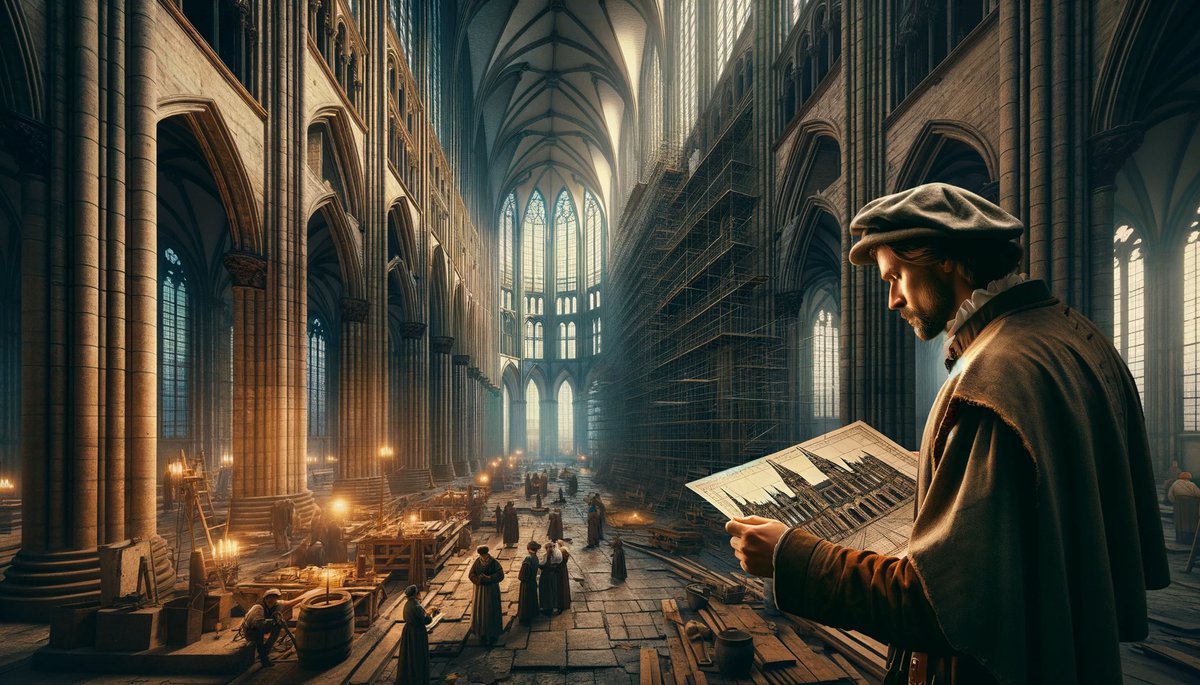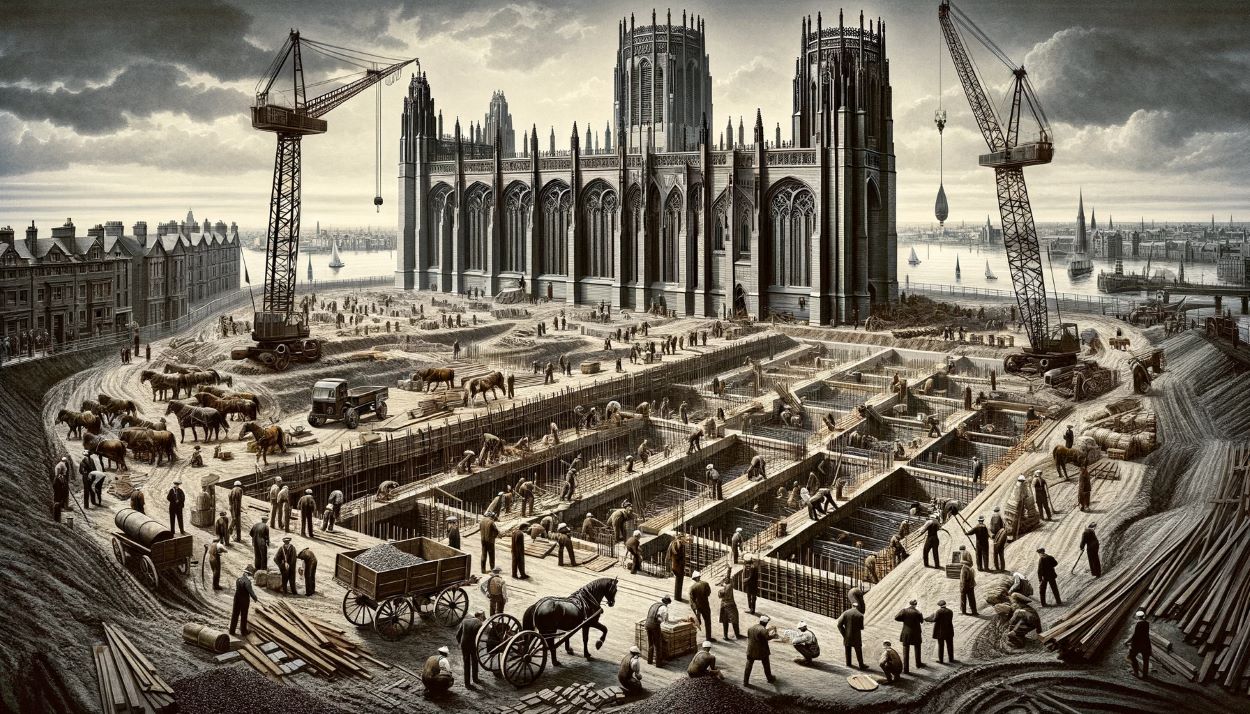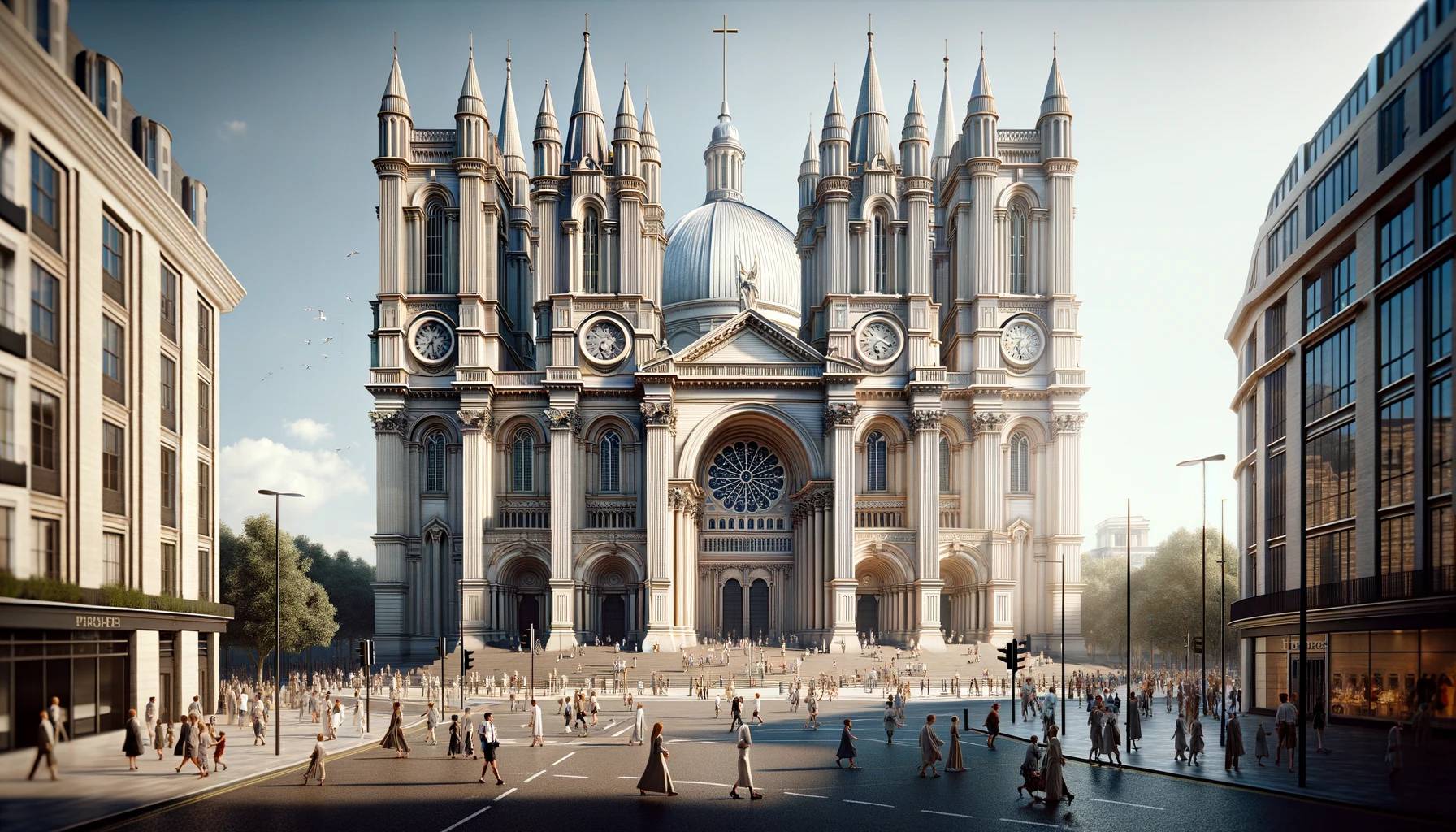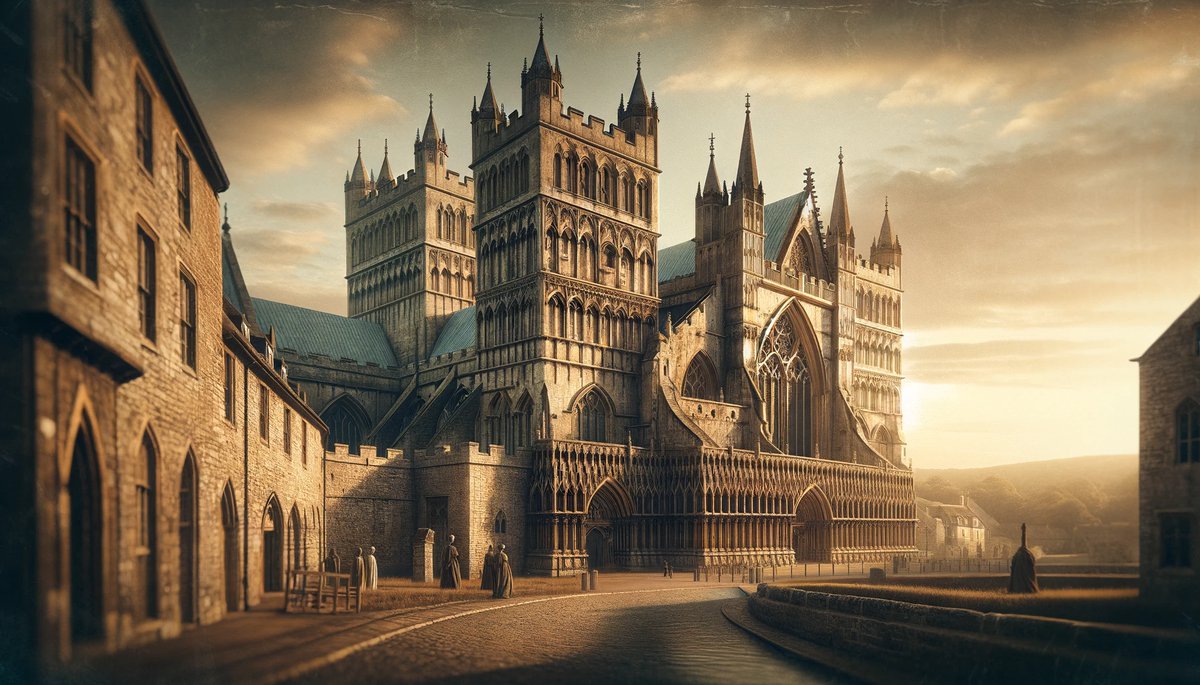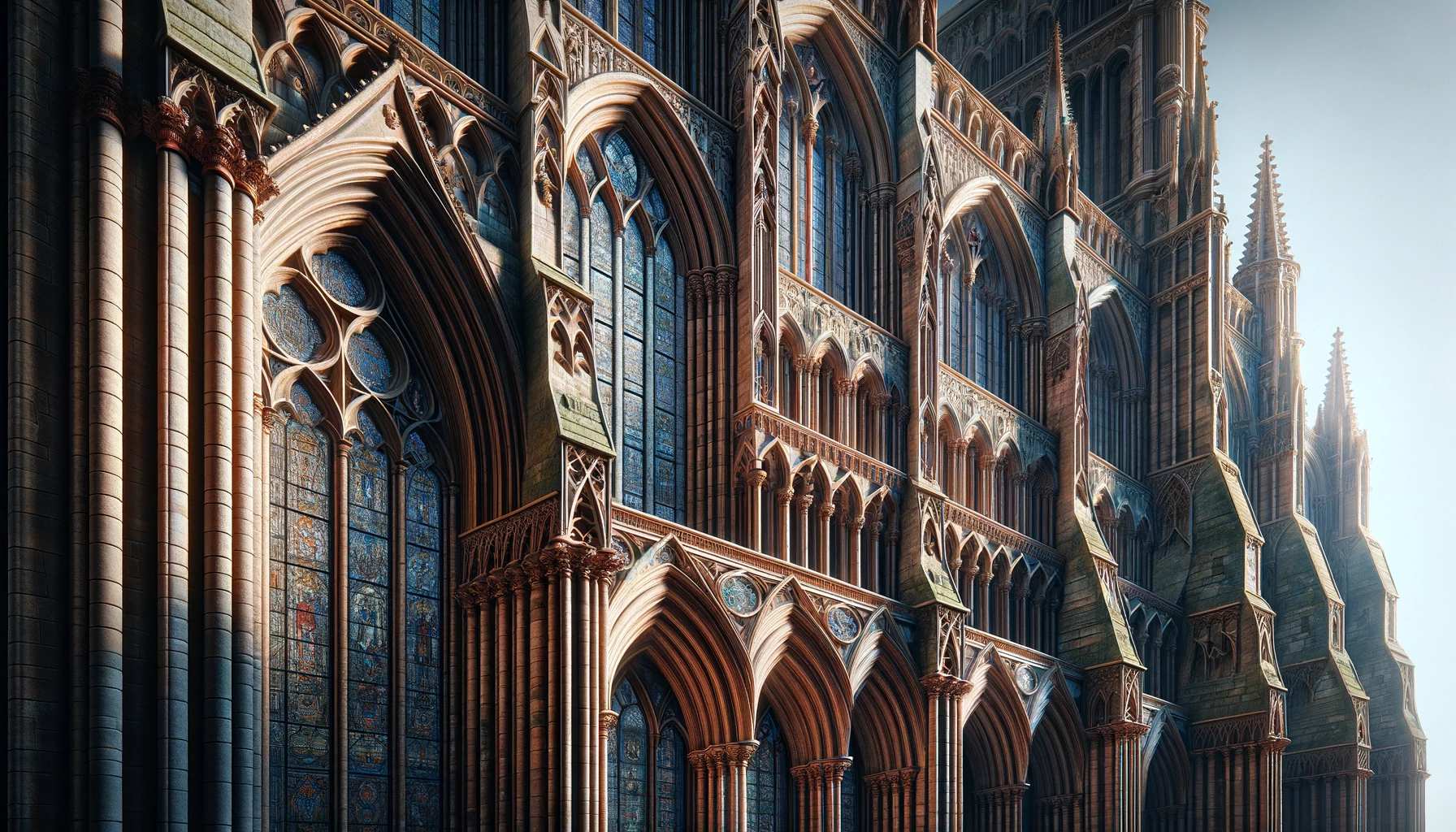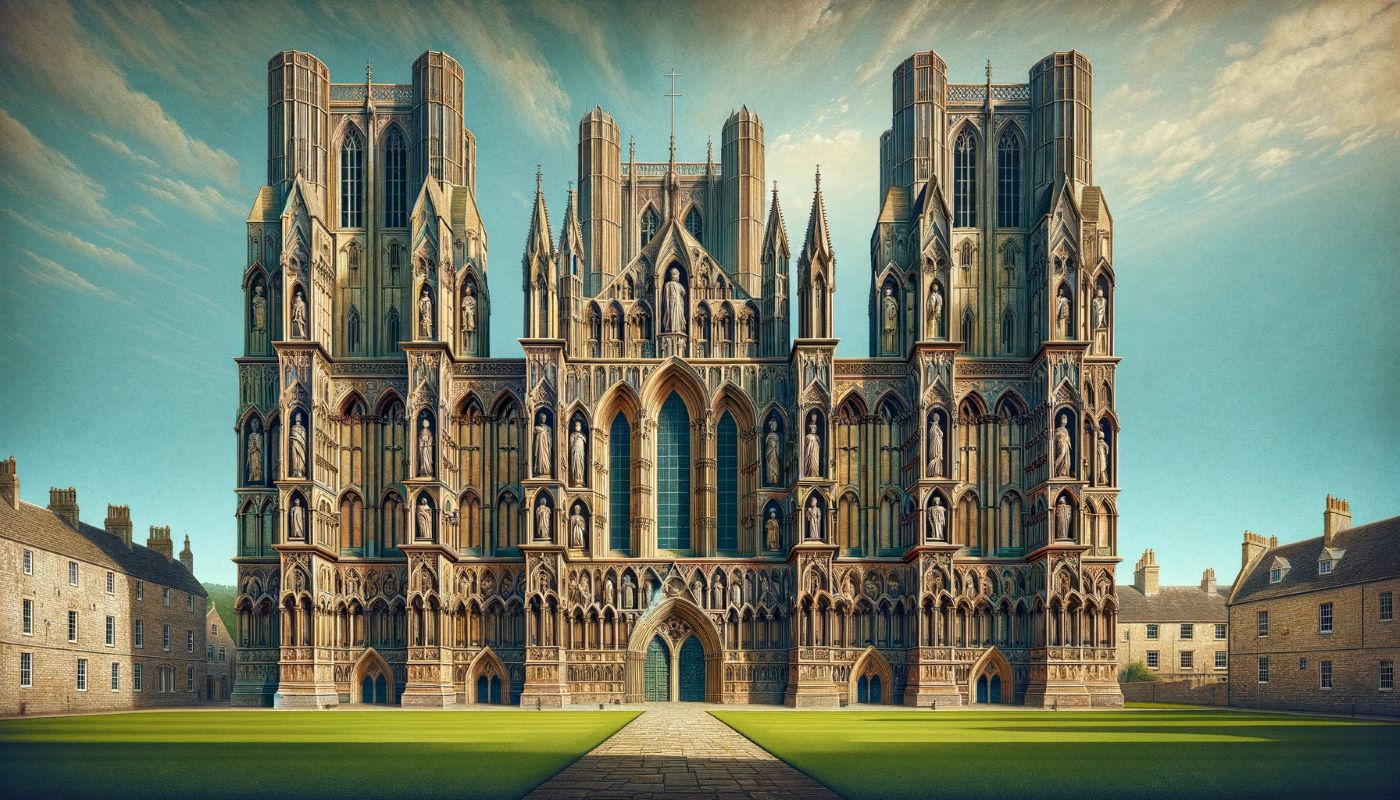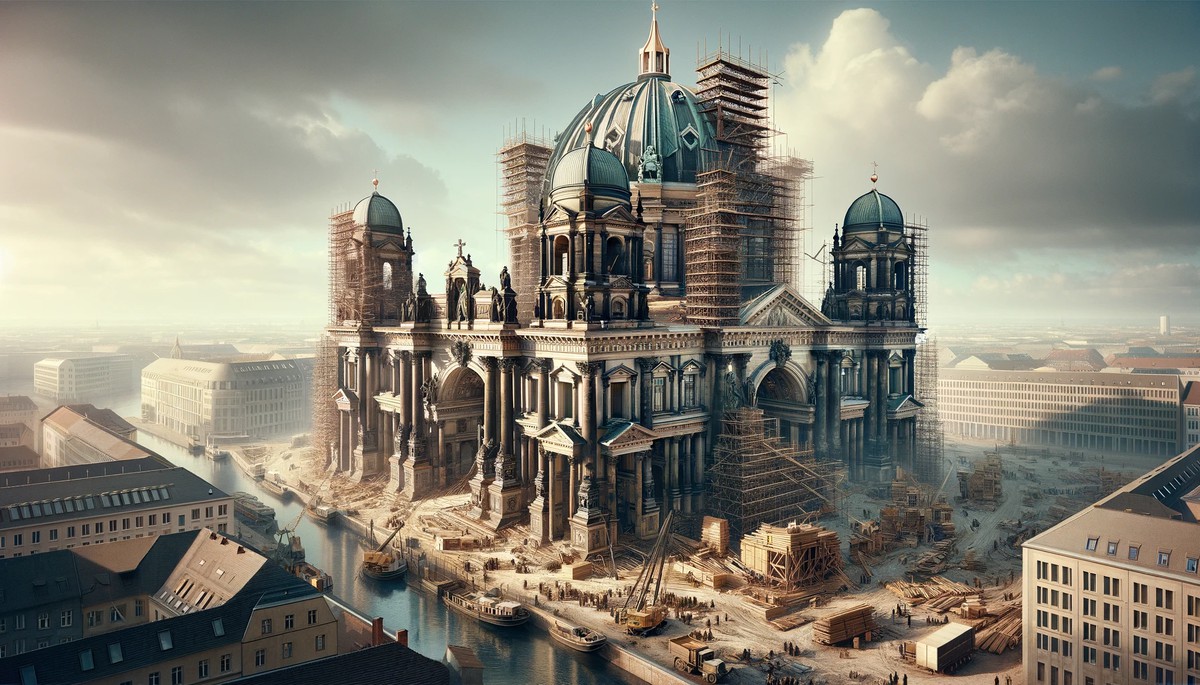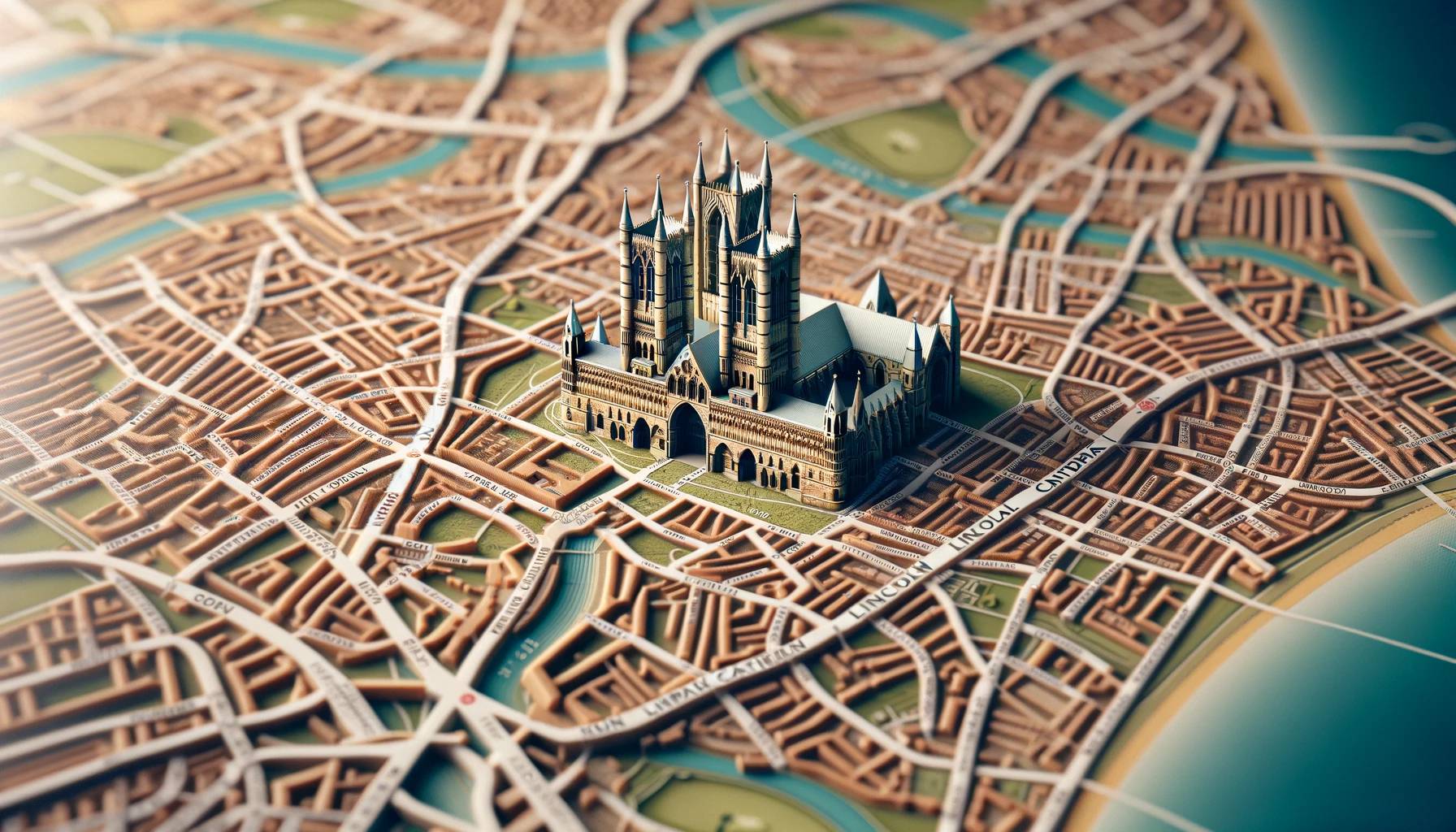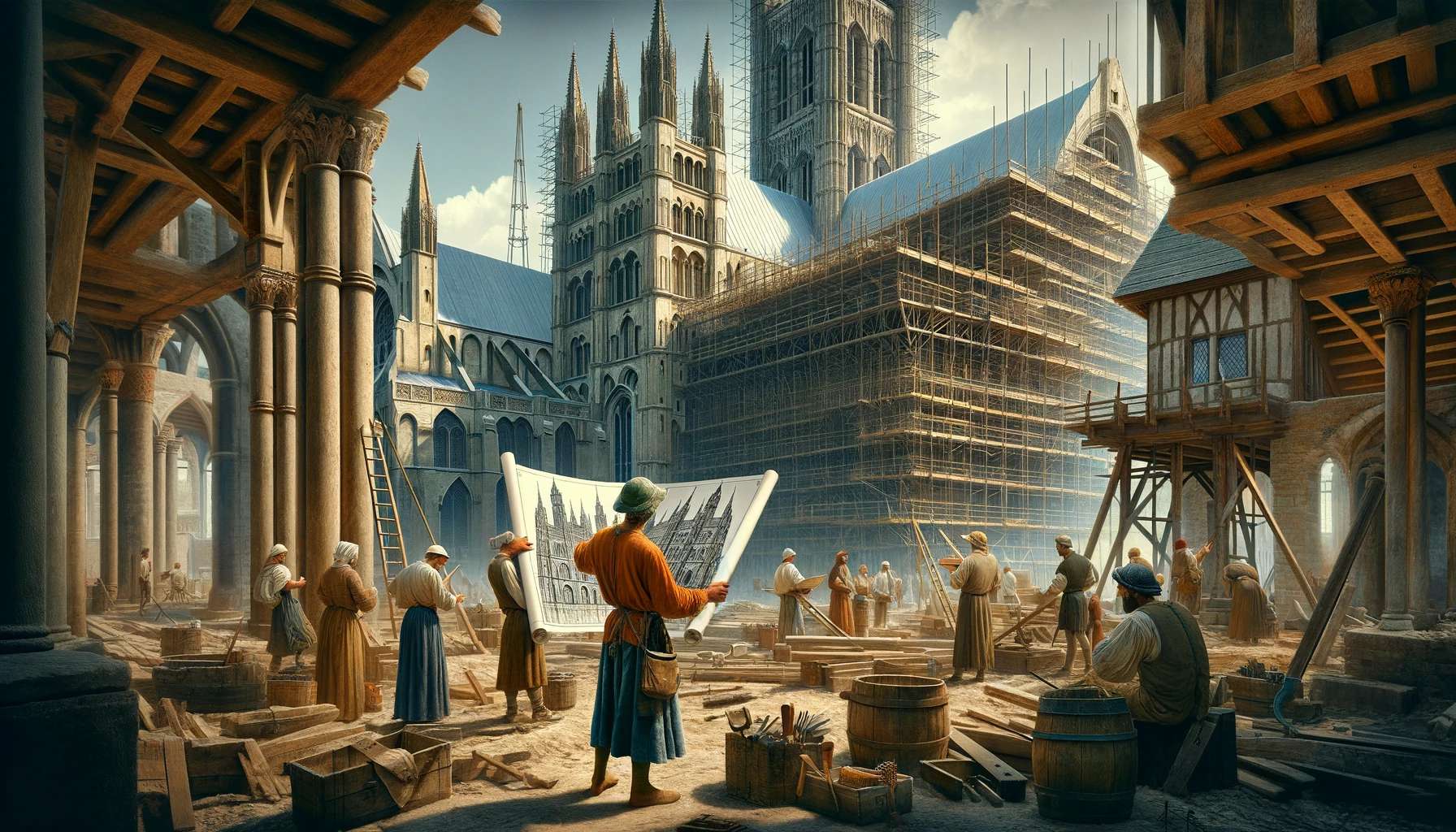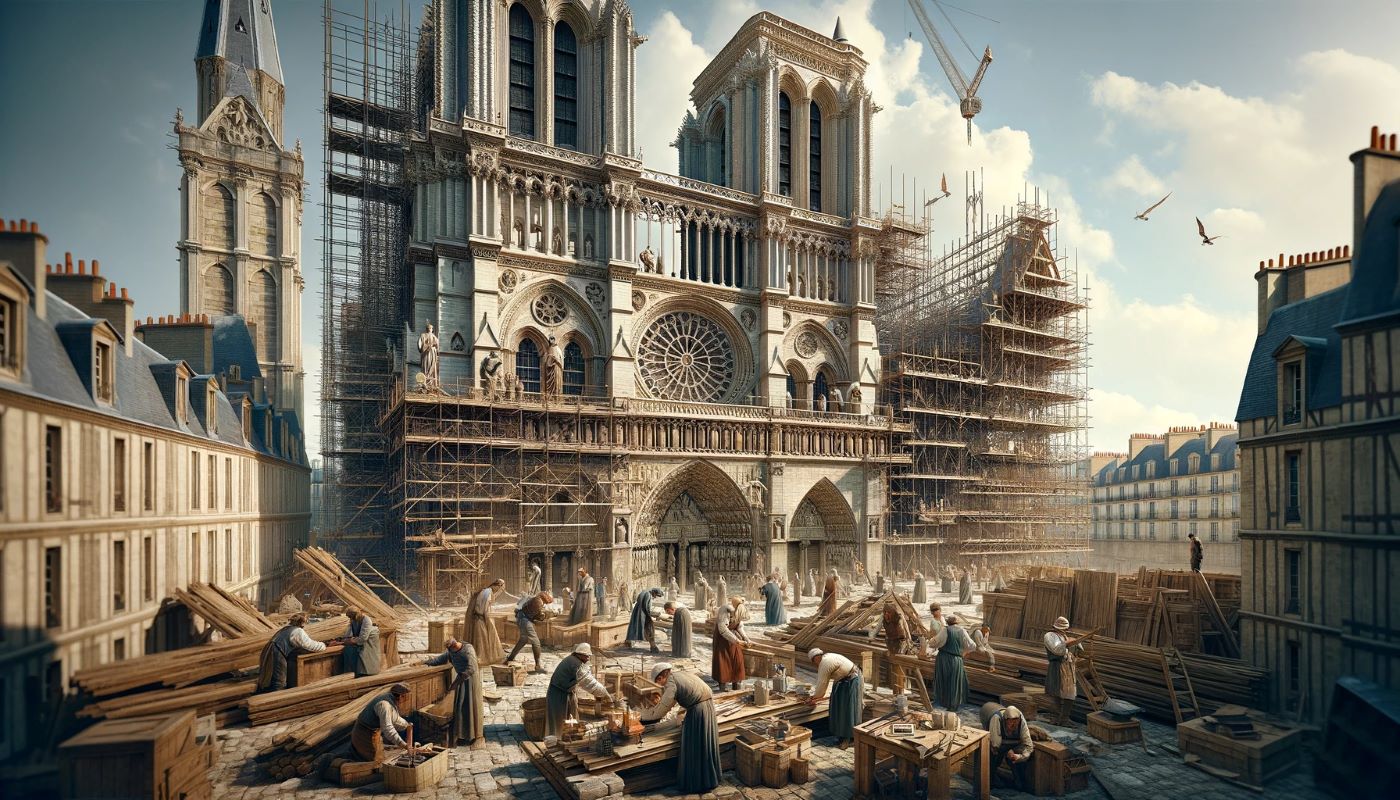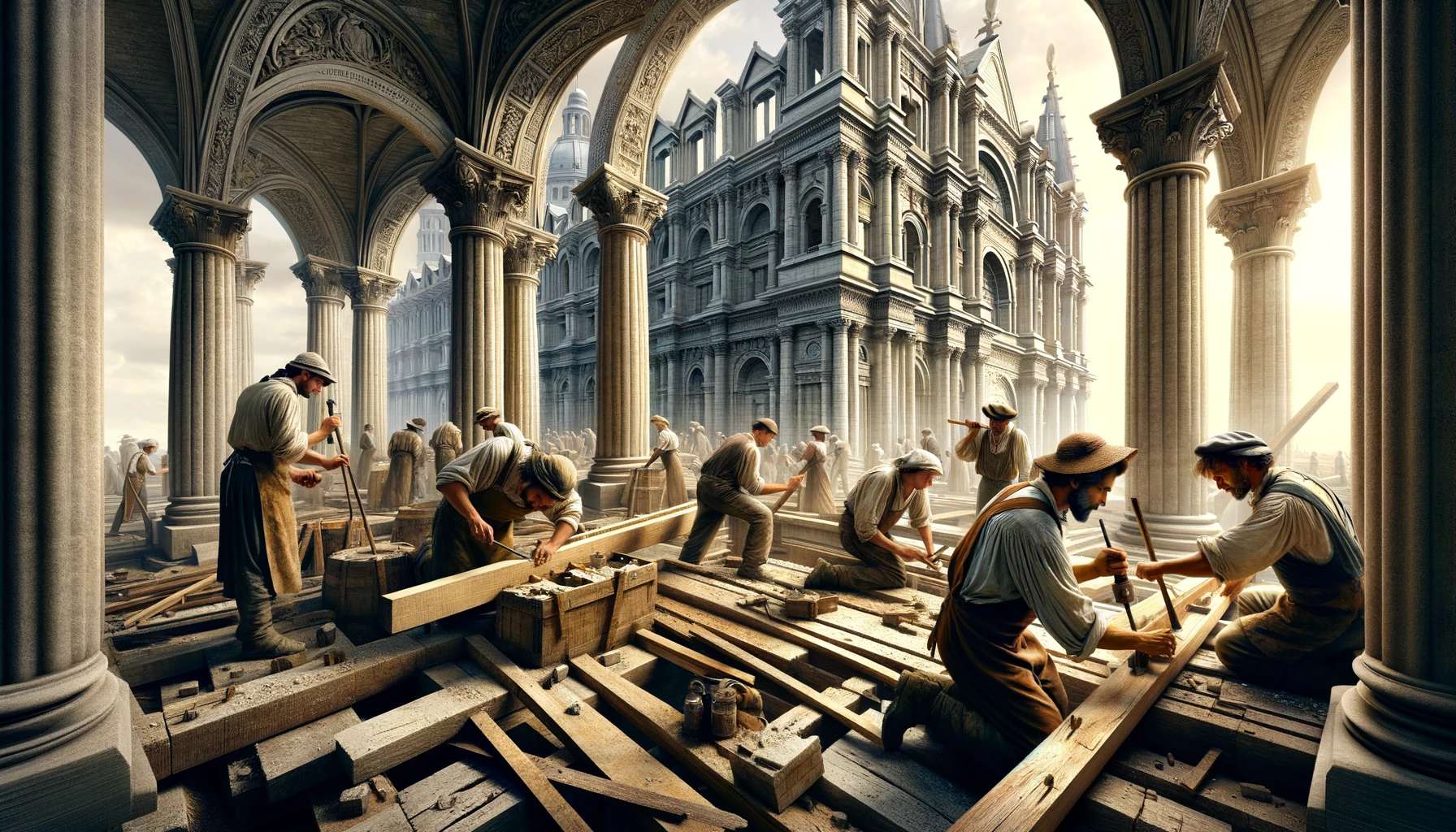Home>Arts and Culture>Lincoln Cathedral: When Was It Built


Arts and Culture
Lincoln Cathedral: When Was It Built
Published: February 16, 2024
Ericka Andersen, an editor at Christian.net, expertly merges digital strategy with content creation, focusing on faith and societal issues. Her communication skills enhance the platform's engaging narratives, fostering meaningful dialogue on belief's impact on society.
Discover the rich history of Lincoln Cathedral, a masterpiece of arts and culture, and learn about its construction and significance. Explore the architectural marvel and its impact on the cultural landscape.
(Many of the links in this article redirect to a specific reviewed product. Your purchase of these products through affiliate links helps to generate commission for Christian.net, at no extra cost. Learn more)
Table of Contents
Introduction
Lincoln Cathedral, a magnificent testament to medieval architecture and craftsmanship, stands as a symbol of spiritual devotion and human ingenuity. This awe-inspiring structure, also known as the Cathedral Church of the Blessed Virgin Mary of Lincoln, is a beacon of history and artistry that has captivated visitors for centuries.
The cathedral's towering spires and intricate stonework beckon travelers from near and far to witness its grandeur and immerse themselves in its rich heritage. As one approaches the cathedral, a sense of reverence and wonder envelops the soul, evoking a profound appreciation for the dedication and skill of those who brought this architectural marvel to life.
Throughout the ages, Lincoln Cathedral has served as a place of worship, a center of learning, and a focal point for community gatherings. Its enduring presence has weathered the tides of time, bearing witness to the evolution of society and the enduring spirit of human creativity.
In the following sections, we will delve into the captivating history, construction, and architectural features of Lincoln Cathedral, shedding light on the remarkable legacy of this iconic edifice. Join us on a journey through time as we unravel the mysteries and marvels of this extraordinary structure, exploring the stories etched within its walls and the profound impact it continues to have on all who behold its splendor.
Read more: When Was Lincoln Cathedral Built
History of Lincoln Cathedral
The history of Lincoln Cathedral is a tapestry woven with threads of faith, ambition, and resilience. Its origins can be traced back to the late 11th century when Bishop Remigius laid the foundation for this monumental undertaking. The cathedral's inception was intertwined with the Norman Conquest of England, a pivotal moment in history that reshaped the country's cultural and architectural landscape.
Construction of the cathedral commenced in 1072, marking the beginning of a legacy that would endure for centuries to come. The vision for this grand structure was fueled by a deep-seated reverence for divine worship and a desire to establish a beacon of spiritual significance in the heart of Lincolnshire.
The cathedral's early years were marked by ambitious architectural endeavors, as successive bishops and craftsmen labored tirelessly to expand and embellish the edifice. The soaring spires and intricate carvings that adorn the cathedral stand as a testament to the unwavering dedication of those who poured their hearts and souls into its construction.
Throughout the medieval period, Lincoln Cathedral flourished as a center of religious devotion and a hub of artistic innovation. Its influence extended far beyond the confines of its walls, shaping the cultural identity of the surrounding region and leaving an indelible mark on the collective consciousness of the populace.
The cathedral weathered tumultuous times, bearing witness to political upheavals, religious reforms, and the ebb and flow of societal dynamics. Despite the challenges it faced, Lincoln Cathedral stood as a steadfast symbol of resilience, embodying the enduring spirit of human creativity and determination.
As the centuries unfolded, the cathedral continued to evolve, reflecting the shifting architectural styles and cultural sensibilities of each era. From the majestic Gothic vaults to the intricate stained glass windows, every facet of the cathedral's design tells a story of innovation and adaptation, mirroring the ever-changing tapestry of human history.
Today, Lincoln Cathedral stands as a living testament to the enduring legacy of its founders and the countless individuals who contributed to its rich heritage. Its hallowed halls bear the echoes of centuries past, inviting visitors to embark on a journey through time and immerse themselves in the profound history that permeates every stone and archway.
The history of Lincoln Cathedral is a saga of faith, fortitude, and the unyielding pursuit of architectural excellence. It serves as a poignant reminder of the enduring power of human creativity and the timeless allure of sacred spaces that transcend the boundaries of time and culture.
Construction of Lincoln Cathedral
The construction of Lincoln Cathedral stands as a testament to the unwavering dedication and ingenuity of medieval craftsmen and artisans. The ambitious undertaking began in 1072 under the guidance of Bishop Remigius, marking the genesis of a monumental architectural legacy that would endure for centuries.
The cathedral's construction unfolded against the backdrop of the Norman Conquest of England, a pivotal moment in history that ushered in a new era of cultural and artistic expression. The vision for the cathedral was grand and far-reaching, reflecting a deep-seated reverence for divine worship and a fervent desire to create a structure of unparalleled magnificence.
The early stages of construction saw the cathedral take shape as a formidable symbol of spiritual devotion and architectural prowess. Skilled craftsmen and laborers toiled tirelessly, harnessing their expertise to bring to life the soaring spires, intricate stonework, and majestic arches that would define the cathedral's aesthetic identity.
The architectural evolution of Lincoln Cathedral mirrored the shifting sensibilities of the medieval era, embracing the Gothic style that would come to characterize many of Europe's most iconic cathedrals. The transition to Gothic architecture brought with it a newfound emphasis on height, light, and structural innovation, culminating in the awe-inspiring design that continues to captivate visitors to this day.
The construction of Lincoln Cathedral was a labor of love and devotion, with each stone and archway bearing the imprint of countless individuals who poured their hearts and souls into its creation. The cathedral's evolution unfolded over generations, with successive bishops and craftsmen adding their own unique flourishes to the edifice, each contributing to the rich tapestry of its architectural narrative.
As the cathedral neared completion, its resplendent spires and ornate embellishments stood as a testament to the collective vision and unwavering determination of those who had shepherded its construction. The culmination of this monumental endeavor heralded a new chapter in the history of Lincoln Cathedral, solidifying its status as a crowning achievement of medieval architecture and a beacon of spiritual significance.
The construction of Lincoln Cathedral stands as a testament to the enduring legacy of human creativity and the timeless allure of sacred spaces that transcend the boundaries of time and culture. It serves as a poignant reminder of the indomitable spirit of those who dared to dream and build on a scale that defied the limitations of their age.
Architecture of Lincoln Cathedral
The architecture of Lincoln Cathedral stands as a pinnacle of medieval craftsmanship and ingenuity, showcasing a harmonious blend of structural grandeur and artistic finesse. From its soaring spires to its intricate carvings, every facet of the cathedral's design reflects a profound reverence for divine worship and a commitment to architectural excellence.
The cathedral's exterior is a testament to the awe-inspiring beauty of Gothic architecture, characterized by its towering spires, pointed arches, and elaborate tracery. The West Front, adorned with a stunning array of sculpted figures and ornate decorations, serves as a captivating introduction to the architectural splendor that awaits within. As visitors approach the cathedral, they are greeted by a symphony of stone, a testament to the skill and artistry of the craftsmen who brought this vision to life.
Stepping into the hallowed interior of Lincoln Cathedral, one is immediately struck by the ethereal play of light and shadow that filters through the stained glass windows, casting a kaleidoscope of colors upon the stone pillars and vaulted ceilings. The soaring nave, with its slender columns and ribbed vaults, creates a sense of verticality that draws the gaze heavenward, evoking a profound sense of spiritual transcendence.
The chapter house, a marvel of medieval design, captivates with its intricate fan vaulting and delicate tracery, offering a glimpse into the architectural innovations of the era. The cloisters, with their serene arcades and lush greenery, provide a tranquil respite, inviting contemplation and reflection amidst the timeless beauty of the cathedral's architecture.
Every aspect of Lincoln Cathedral's design, from the majestic proportions of its interior spaces to the delicate details of its sculptural adornments, speaks to the profound artistry and technical prowess of its creators. The cathedral stands as a living testament to the enduring legacy of medieval architecture, inviting visitors to marvel at the intersection of faith and creativity that defines its architectural identity.
As one traverses the labyrinthine corridors and chapels of Lincoln Cathedral, each architectural element unfolds like a chapter in a grand narrative, weaving together the stories of those who envisioned, crafted, and revered this sacred space. The architecture of Lincoln Cathedral transcends the boundaries of time, beckoning visitors to immerse themselves in a world where the divine and the human converge in a symphony of stone and light.
In every arch, every vault, and every sculpted figure, the architecture of Lincoln Cathedral whispers the secrets of centuries past, inviting all who behold it to partake in a timeless dialogue between the mortal and the divine. It is a testament to the enduring power of architecture to inspire, uplift, and transcend the limitations of the material world, leaving an indelible imprint on the hearts and minds of all who pass through its hallowed halls.
Renovations and Additions
The storied history of Lincoln Cathedral is punctuated by a series of renovations and additions that have enriched its architectural tapestry and preserved its legacy for future generations. Over the centuries, the cathedral has undergone numerous transformations, each imbued with a deep reverence for its historical significance and a commitment to safeguarding its structural integrity.
One of the most notable periods of renovation occurred in the 19th century, under the guidance of renowned architect James Essex. His meticulous restoration efforts sought to revitalize the cathedral's aging stonework and rejuvenate its ornate carvings, breathing new life into the weathered façade. Essex's dedication to preserving the cathedral's original design while addressing the wear and tear of time stands as a testament to his unwavering respect for its architectural heritage.
In addition to restorative endeavors, Lincoln Cathedral has also witnessed the addition of striking new features that have further enhanced its grandeur. The construction of the iconic Bishop's Eye, a magnificent rose window that adorns the cathedral's West Front, stands as a testament to the enduring spirit of innovation that has characterized its evolution. This awe-inspiring addition, with its intricate tracery and vibrant stained glass, serves as a testament to the cathedral's ability to embrace new artistic expressions while honoring its storied past.
In more recent times, conservation efforts have been undertaken to safeguard the cathedral's structural stability and preserve its artistic treasures. The meticulous care and attention devoted to maintaining the cathedral's medieval stonework, delicate sculptures, and resplendent stained glass windows underscore a steadfast commitment to honoring its legacy and ensuring its enduring splendor for generations to come.
The renovations and additions that have shaped Lincoln Cathedral over the centuries stand as a testament to the enduring legacy of this architectural marvel. Each restoration, each new feature, and each act of preservation serves as a poignant reminder of the cathedral's profound cultural significance and its timeless allure. As the cathedral continues to evolve, it remains a living testament to the enduring power of human creativity and the enduring legacy of sacred spaces that transcend the boundaries of time and culture.
The story of Lincoln Cathedral is one of resilience, reverence, and the unyielding pursuit of architectural excellence. It serves as a poignant reminder of the enduring power of human creativity and the timeless allure of sacred spaces that transcend the boundaries of time and culture.
Read more: Who Built The Lincoln Cathedral
Conclusion
In conclusion, Lincoln Cathedral stands as a timeless testament to the enduring legacy of medieval architecture, spiritual devotion, and human ingenuity. From its humble beginnings in the 11th century to its resplendent presence in the modern era, the cathedral has woven a rich tapestry of history, artistry, and cultural significance that continues to captivate visitors from around the world.
The cathedral's history is a saga of faith, fortitude, and the unyielding pursuit of architectural excellence. Its construction, unfolding against the backdrop of the Norman Conquest, reflects the unwavering dedication and ingenuity of medieval craftsmen and artisans. The architectural evolution of Lincoln Cathedral mirrors the shifting sensibilities of the medieval era, embracing the Gothic style and culminating in an awe-inspiring design that continues to inspire awe and reverence.
The cathedral's architecture, characterized by its soaring spires, intricate carvings, and ethereal play of light through stained glass windows, embodies a harmonious blend of structural grandeur and artistic finesse. Every facet of its design speaks to the profound artistry and technical prowess of its creators, inviting visitors to immerse themselves in a world where the divine and the human converge in a symphony of stone and light.
Throughout the centuries, Lincoln Cathedral has undergone numerous renovations and additions, each imbued with a deep reverence for its historical significance and a commitment to safeguarding its structural integrity. From meticulous restoration efforts to striking new features, the cathedral has continued to evolve while honoring its storied past, serving as a living testament to the enduring power of human creativity and the timeless allure of sacred spaces.
As visitors traverse its labyrinthine corridors and chapels, they are invited to partake in a timeless dialogue between the mortal and the divine, as the cathedral whispers the secrets of centuries past. It is a testament to the enduring power of architecture to inspire, uplift, and transcend the limitations of the material world, leaving an indelible imprint on the hearts and minds of all who pass through its hallowed halls.
In essence, Lincoln Cathedral stands as a beacon of history and artistry, a living testament to the enduring spirit of human creativity and the timeless allure of sacred spaces that transcend the boundaries of time and culture. It invites all who behold it to embark on a journey through time, immersing themselves in the profound history that permeates every stone and archway, and carrying forward the legacy of this architectural marvel for generations to come.
